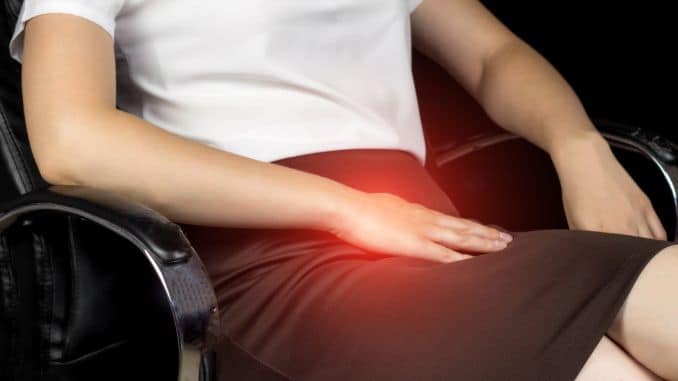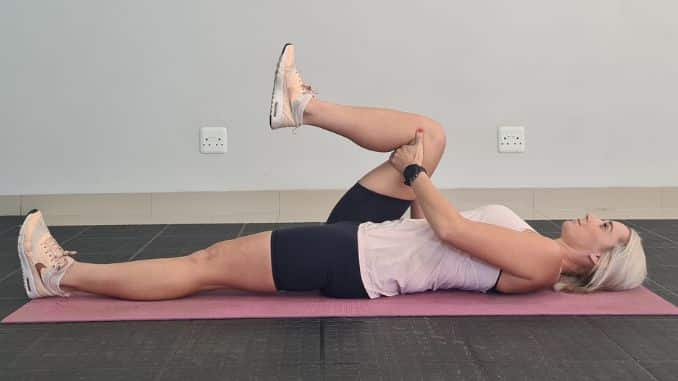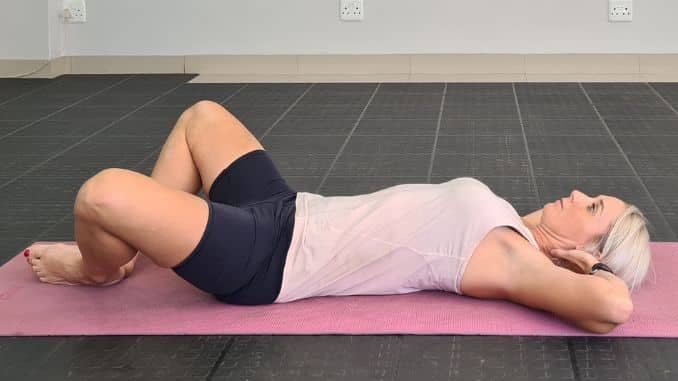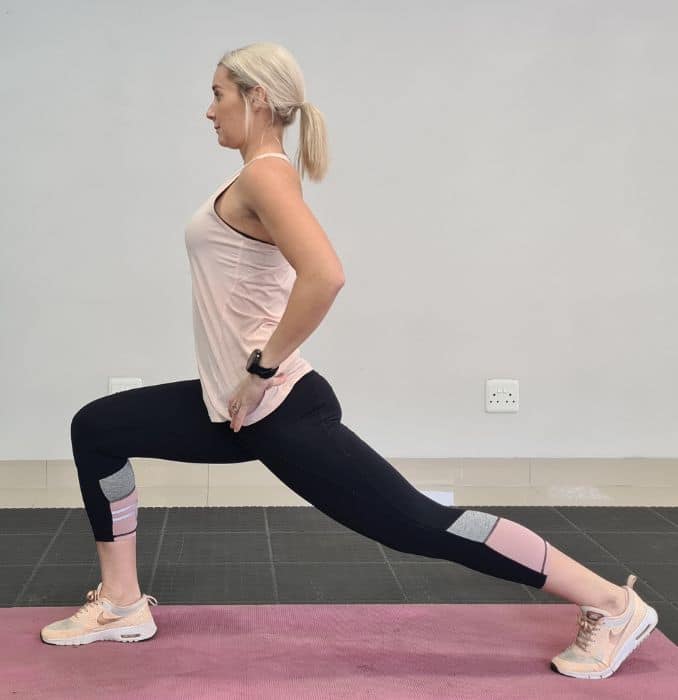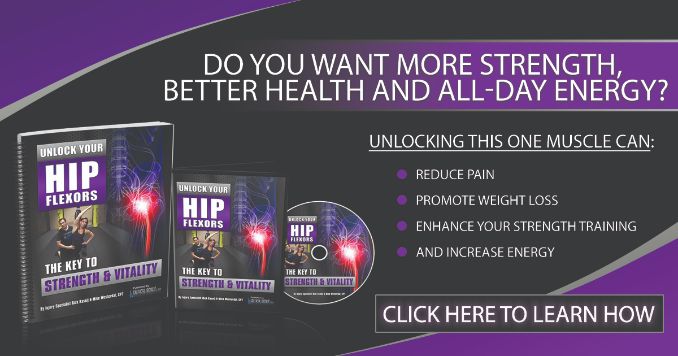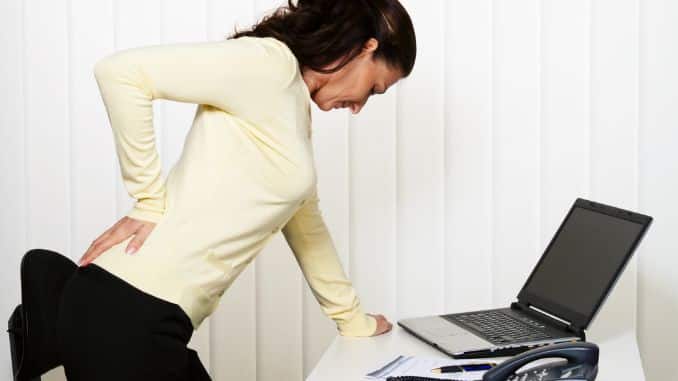
Hip pain is a common problem many experience. However, what if hip pain occurs when standing up after sitting for a long period of time? This may be difficult to deal with, especially if your daily activities require you to sit for a long period of time and occasionally stand up. What causes it? Let’s dive into the causes of it as well as Hip Pain Stretches.
What Causes My Hip Pain After Sitting?
Whether in sitting or standing, the hip muscles, especially the hip flexors, play a major part in it. The hip flexors are a group of muscles responsible for flexing the hip and moving your lower body when you walk, kick, or even bend.
When sitting, the length of the hip flexors and other surrounding muscles are shortened. This results in an anterior pelvic tilt and over-arching of the lower back. Meanwhile, the gluteal and the hamstring muscles, which connect to the back of the hip and pelvis, are stretched and longer.

During the anterior pelvic tilt, the hip joint moves differently in its socket. This leads to an internal rotation of the thigh bone or femur. The adductor and groin muscles then become shorter and tighter while the abductor muscles become longer.
When this pattern of muscular activity when sitting is repeated as days, weeks, months, and years pass by, the hip muscles become accustomed to this position. Eventually, the hip muscles will tighten up as tension builds up.
The hip flexors and adductors may have difficulty lengthening, and the glutes, hamstrings, and abductor muscles may have difficulty activating when standing after sitting for a long time. With this, an imbalance in the hip joint because of these muscles contributes to the hip pain you experience. With this, Hip Pain Stretches can be of help.
Depending on the muscle involved, hip pain can be felt in front or back of the hip, groin, on the outside of the hip, or a combination of both.
1. Pain In The Front Of The Hip
Pain in the front of the hip is usually caused by the tightness of the iliopsoas muscle. The iliopsoas muscle consists of the psoas and iliacus muscles and is the main hip flexor of the body. These muscles cross the front of the hip joint and insert at the lesser trochanter of the femur. It also stabilizes the hip and the lower back.
This muscle becomes tight when sitting and may not fully lengthen after standing. The iliopsoas causes a vertical pull and compression in the hip joint. This results in pain in the front of the hip when standing after sitting for a long period of time.
2. Pain In The Back Of The Hip
Several muscles may be causing pain in the back of the hip. This includes glutes, hamstrings, and other deep hip rotators. When the hip flexors in front of the hip joint are tightened and shortened, anterior pelvic tilt is created. The glutes and hamstrings muscles, which attach to the back of the hip and pelvis, become elongated in an unnatural way. The surrounding muscles, which include the posterior chain muscles (along the back of your body), may also try to compensate for this imbalance and tighten.
3. Pain In The Groin
Having a tight iliopsoas muscle could have referred to pain in the groin as it inserts at the top and inside of the femur (thigh bone), which is near the groin area. It could also be because of the tightness from the adductor muscle group consisting of the adductor magnus, adductor longus, adductor brevis, pectineus, and gracilis. When these muscles are tight, it can create a pull on its origin along the pubis of the pelvis. Consider Hip Pain Stretches.
4. Pain In The Outer Hip
Pain in the lateral side of the hip or outer hip may be caused by the tightness of the abductor muscle group, which consists of the gluteus medius, gluteus minimus, and the tensor fascia latae (or TFL). These muscles originate along the outer surface of the ilium (your pelvic bone) and insert at or near the greater trochanter (top of your femur/thigh bone). When these muscles are tight, it creates compression on the greater trochanter (top of your thigh bone), which causes inflammation in the bursa and pain in this area.
How Do I Improve Hip Pain When Standing Up After Sitting?
Since muscle tightness and imbalance are what causes the hip pain, it is important to address this first to relieve the pain. Stretching and strengthening exercises or Hip Pain Stretches are essential to release the tension in the tight muscles, thereby relieving the pain.
3 Simple Tips To Relieve Pain When Standing Up After Sitting
-
Take Regular Breaks To Move Around
If you are working or just simply at home sitting for a long period of time, taking breaks to stand up and move around will help in muscle activation and improve blood flow.
-
Stretch Your Hips Regularly
If you can’t avoid sitting for a long period of time because of the nature of your work, you may want to consider adding stretching to your daily routine instead. Stretching also improves blood flow and circulation, which helps in the lengthening of the muscles and provides pain relief.
-
Use Proper Posture When Sitting
As much as possible, sit in an upright position. This helps activate and strengthen your core and hip muscles which can support your body more. Adjust the height of your seat by adding a pillow to it. This lengthens your iliopsoas muscle, reducing the pull it creates on your hips and spine while sitting.
4 Easy Stretches To Relieve Hip Pain
1. Knee To Chest
Lie on your back. Then pull your right knee towards your chest while keeping your left knee extended. Hold this for 30 seconds, 3 times, 1-2 sets. Repeat on the other side.
This stretches the lower back, hips, and hamstrings muscles.
2. Reclining Angle Bound Pose
Lie on your back. Put the soles of your feet together, then slowly open up your knees sidewards slowly until you feel a gentle stretch. Hold this for 30 seconds, 3 times, 1-2 sets.
This stretches the inner thighs, hips, and groin muscles.
3. Kneeling Side Bend Stretch
For this Hip Pain Stretches, kneel on the floor with your knees slightly spread away from each other, back straight, and core tight, then extend your right leg on the side perpendicular to your body. Then extend your left arm overhead and slowly bend your torso to your right side. Hold this for 30 seconds, 3 times, 1-2 sets.
This stretches the groin, hips, inner thigh, and oblique muscles.
4. Lunging Hip Flexor Stretch
Do a forward lunge position with your right knee bent on a 90-degree angle and your left leg straight. Then drive your hips forward until you feel a gentle stretch from the front of your hip, groin, and thigh on your left side. Hold this for 30 seconds, 3 times, 1-2 sets.
This stretches hips, quads, and gluteal muscles.
Takeaway
Hip pain caused by muscle imbalance and tightness is built over the years and not just days or weeks. Aside from treating the pain for the short term, it is advisable to create a routine that you can follow to retrain the muscles around your hips and prevent it from happening again. Your doctor may advise on exercises you can do and work closely with a Physical Therapist to help you recover from hip pain in the long term.
Reduce Pain, Promote Weight Loss, Enhance Your Strength Training, And Increase Energy by Unlocking Your Hip Flexors!

